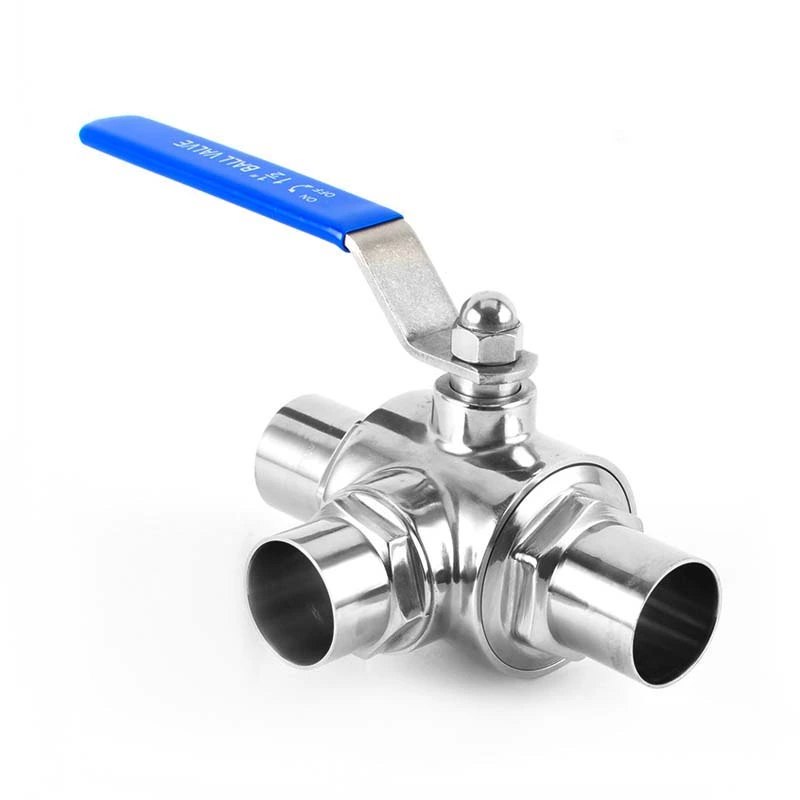Sanitary Ball Valve Technical Specifications
Sanitary Ball Valve is widely used in industries with stringent hygiene requirements, such as food, pharmaceuticals, and cosmetics. Its technical specifications are crucial for equipment safety, reliability, and product quality. From core construction to practical application, these specifications provide crucial standards for production and use.
In terms of materials, the valve body, ball, and stem of the Q81F sanitary quick-release ball valve are typically constructed from high-quality stainless steel, with 304 and 316L stainless steel being common. 304 stainless steel offers excellent corrosion resistance and comprehensive performance, meeting the requirements of general hygienic environments. 316L stainless steel, with the addition of molybdenum, offers superior resistance to acid and alkali corrosion and high temperatures, making it particularly suitable for demanding industries like pharmaceuticals. Surface treatment is also crucial, requiring high-precision polishing of both internal and external surfaces to a roughness of Ra ≤ 0.8μm, with some high-end products even achieving Ra ≤ 0.4μm. This smooth surface effectively prevents material residue and bacterial growth, facilitating cleaning and meeting hygiene standards.
Sealing performance is a key technical characteristic of the Q81F sanitary quick-release ball valve. This ball valve typically uses food-grade silicone rubber or polytetrafluoroethylene (PTFE) as sealing materials. Silicone rubber seals offer excellent elasticity and chemical stability, are non-toxic and odorless, and can adapt to a range of temperatures, making them widely used in the food and beverage industry. PTFE seals, on the other hand, offer excellent corrosion resistance and a low friction coefficient, making them suitable for use in a variety of chemical environments. Sealing performance testing requires that leakage should not exceed a specified value at rated pressure. For example, at 1.6 MPa, gas leakage must be less than 5 × 10⁻⁵ m³/h to ensure no leakage or contamination during operation.
A key feature of quick-release ball valves, the Q81F sanitary quick-release ball valve utilizes quick-release clamps. This connection eliminates the need for welding and facilitates easy installation and removal. Clamp sizes range from DN15 to DN100, corresponding to various pipe diameters. Quick-release connectors are designed to comply with international standards, such as ISO and DIN, enabling quick connection to pipes and equipment of various brands while ensuring a reliable seal. During installation, simply align the quick-release connector with the pipe, insert the clamp, and tighten the bolts. The entire process takes just minutes, significantly improving equipment maintenance and repair efficiency.
The Q81F sanitary quick-release ball valve also has clearly defined pressure and temperature ranges. Its operating pressure generally ranges from 0 to 1.6 MPa, meeting the pressure requirements of most production scenarios. The operating temperature range varies depending on the seal material. When using silicone rubber seals, the operating temperature is generally -20°C to 200°C, while when using PTFE seals, the operating temperature can reach -40°C to 260°C, ensuring stable operation under various process conditions.
During the manufacturing and inspection stages, every Q81F sanitary quick-release ball valve undergoes rigorous procedures. From incoming raw material inspection to ensure the stainless steel's composition and performance meet standards, to precision machining and polishing of the ball, to overall assembly and sealing performance testing, detailed operating procedures and quality control standards are in place. During finished product inspection, the valve's appearance, dimensional accuracy, sealing performance, pressure test and other items will be tested one by one. Only qualified products can be shipped to ensure the reliability of product quality.
